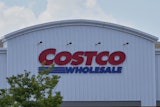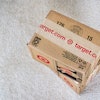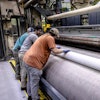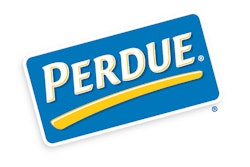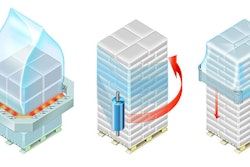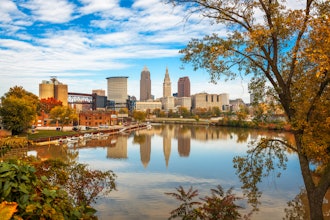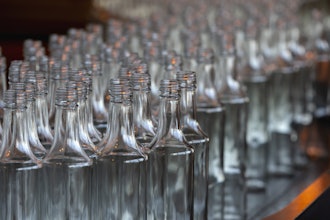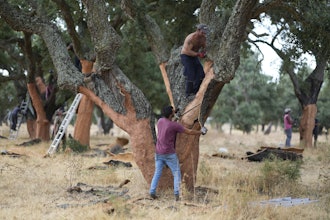Did you know the dryer in your food processing line can significantly impact your bottom line? Drying is an energy-intensive operation. It can cost you 10 times as much in terms of lost production compared to energy costs. In fact, you might be sending more than 3% of your production out the exhaust stack without even realizing it. Downtime for cleaning and maintenance may also be costing you more than it should. Here are three key operational areas to consider.
Energy Consumption
The most obvious cost of drying is for energy required to remove moisture. Energy is essentially needed to cover four heat loads in the drying operation. They include:
- Warming up the product
- Evaporating water from the product
- Heating the make-up air
- Steady-state heat losses
For example, an extruded snack food product will leave the extruder at a high temperature and cool as it is conveyed to the dryer. Typically, extruded products enter the dryer above 65°C. Most of the energy in the drying operation is used to evaporate water. The energy required to change liquid water into vapor is about 2,350 kJ/kg of water evaporated (the value varies very slightly with temperature). You can often reduce the energy consumed in evaporating water by reducing the amount of water that the dryer must remove.
|
Table 1. Impact of moisture on drying load |
|||
|
Inlet Moisture |
Outlet Moisture |
Water Removal Per Ton of Product Produced |
% Increase in Water Removal |
|
24% |
10% |
184 Kg |
- |
|
27% |
10% |
233 Kg |
27% |
|
30% |
10% |
286 Kg |
55% |
|
30% |
7% |
329 Kg |
79% |
Table 1 shows the tremendous impact inlet and outlet moisture can have on the drying load in your dryer. Even a small increase in product inlet moisture from 24% to 27% on a wet weight basis increases the load on the dryer by 27%. Naturally, your inlet moisture must be driven by product quality considerations, but is there consistency in your extruder operation? If one shift runs the extruder “wetter” than the next shift, you are wasting energy by adding excessive water to your product only to spend money in the dryer to remove the water.
The third heat load category, heating the make-up air, is typically the second-highest heat load. However, in a poorly-operated or poorly-designed dryer, this heat load can be the largest. This is the area where you as a dryer operator and your dryer manufacturer can have the most impact. The dryer needs a steady supply of dry make-up air. Without this influx of air, the process air in the dryer becomes saturated with moisture and unable to dry a product efficiently. The trick is knowing how much air to bring into the dryer.
Excessive make-up air can lead to excessive energy consumption. That’s because make-up air enters the dryer at a relatively low temperature, and after picking up water in the dryer, it eventually leaves the dryer at a higher exhaust temperature. Clearly, energy is consumed in heating the make-up air to the exhaust temperature. It’s important to understand that the exhaust air in your dryer is basically the make-up air leaving the dryer along with the evaporated water. If you want to reduce the amount of make-up air in most dryers, you will typically reduce your exhaust, either by closing the exhaust damper or turning down the exhaust fan.
The temperature of the exhaust and make-up air also affects the energy used to heat the make-up air. If the make-up air is preheated before being introduced into the dryer, the dryer will use less energy to heat the air. In an extruded food line, preheated make-up air can be drawn from your cooling operation. Spent cooling air used to cool the product is still relatively dry and can be used as make-up air to the dryer.
Improper dryer operation, such as excessively shallow bed depths (shorter retention time in the dryer) or internal air bypasses can lead to high exhaust temperatures, thereby increasing the energy used to heat the make-up air to the exhaust temperature. Figure 1 shows the significant impact that heating the make-up air and various operating parameters can have on your dryer’s overall energy consumption.
Unless your dryer is poorly insulated, losses from the dryer should be low. But if you have a dryer with large areas that are not insulated or have poorly-insulated surfaces, thermal losses from your dryer could be costing you.
How much does it cost to run an extruded product through a dryer? Typically, dryers will use between 3,000 kJ/kg and 4,500 kJ/kg of water evaporated. A poorly-operated or poorly-designed dryer might even use much more. Based on a typical value of 3,250 kJ/kg of water evaporated, an extruded food processing line producing 75,000 tons per year will typically use about 5 x 10¹⁰ kJ/year. If natural gas is used as the heat source in the dryer, and if the cost of natural gas is 5x10⁻⁶ US$/kJ, the yearly cost of natural gas to produce this tonnage is $250,000. Naturally, this cost will change depending on the type and cost of fuel used in the drying operation.
Our field engineer evaluations have shown that many dryers in the industry are using over 50% more energy than they should due to improper design or operation (Figure 1). This represents a tremendous potential savings for the food processor. Imagine saving $100,000 per year, simply by adjusting a few dampers and making minor changes in the way you operate your dryer. Believe it or not, many food processors have done just that after learning how to properly run their dryers.
Moisture Uniformity
Most extruded food products are sold by weight. Therefore, if the product is being over-dried, you might say that you’re sending water at the value of your product — which should have gone to packaging — straight out your exhaust stack.
Suppose your extruded product can’t contain over 10% moisture limit and the product coming out of your dryer has a moisture variation of ± 3% moisture on a wet-weight basis. This means you must dry your product to 7% moisture on average in order to ensure that no product is over the specified 10% moisture limit. The result is a 3% loss in production compared to drying the product only to 10% moisture. If your dryer could be made to dry more uniformly, you could raise your discharge moisture and get more out of the production line with no additional cost or additional dry ingredients.
The value of this lost production due to non-uniform drying will surprise you. Consider the same food processing line as in the previous example, producing 75,000 tons per year. A 3% loss in production from this line represents 2,250 tons per year of lost production. What is the value of this lost production? At $400 per ton, it would be $900,000. At $600 per ton, it would be $1.35 million. The numbers speak for themselves.
The bottom line is no food manufacturer can afford to be over-drying a product. A well-designed, well-adjusted dryer should be able to dry your product to within ±0.75% or better. When was the last time you checked the moisture uniformity on your dryer?
Maintenance and Sanitation
Many food processors struggle to keep old, high-maintenance equipment running. The cost of purchasing replacement parts for the dryer may be well documented, but what about the cost of downtime for cleaning and maintaining the equipment? A dryer producing 10 tons per hour of could be producing well over $100,000 worth of food product each day.
If you’re spending as much as three hours a week on unplanned maintenance or cleaning downtime, you’re losing 30 tons of product per week which equates to $650,000 per year of lost production using the above parameters. The cost of this downtime must be considered when looking at the economics of your drying operation.
Most food manufacturers are well aware of the energy cost for their drying operation. However, not everyone tracks the cost of over-drying due to non-uniform drying, or the cost of downtime for maintenance and sanitation.
By taking a closer look, food processors can significantly reduce drying costs and increase production rates. A field engineer specializing in dryer optimization can give your dryer a full mechanical and process evaluation and help you find untapped potential.
